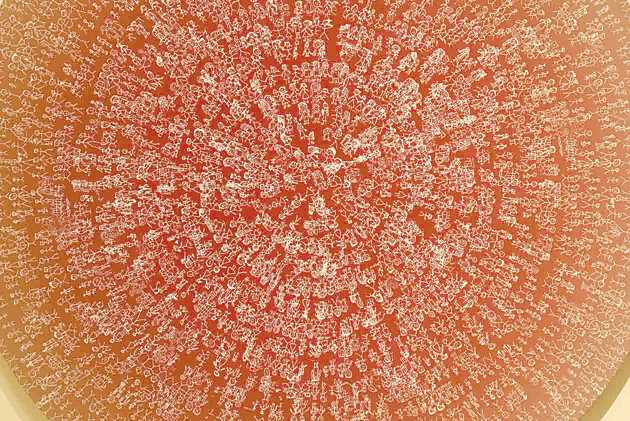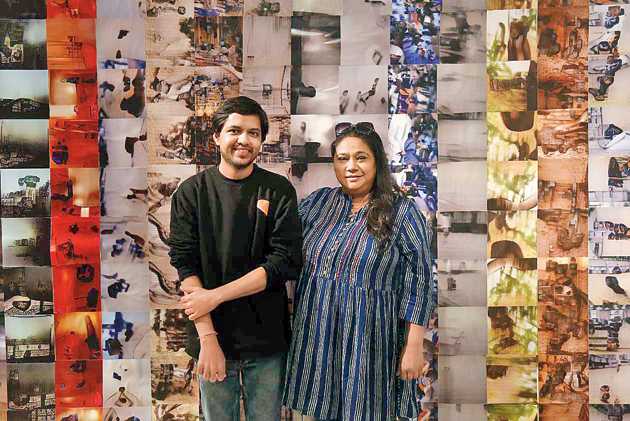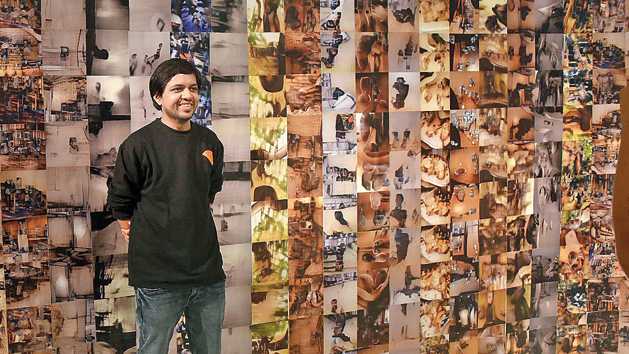Human beings, inherently, have always thrived in paradoxes. History bears witness to our tendency to push against that which gradually evolves into an integral part of our lives. For example, take technology. With all the hullabaloo (read: ethical debates) that initially surrounded the advent of things such as the first computer or the first few technology-enabled interventions in medical science stand in stark contrast to our tech-dependent lifestyles that we now have — from the cellphone having literally become an extension of our hands to the laptop I am using to write this story. And if art imitates life, then how much longer could we keep technology away from permeating art? EXO-Stential — AI Musings on the Post-human, an artificial intelligence-driven art showcase by Harshit Agrawal, which is on display at the Kolkata Centre for Creativity by Emami Art, not only tackles questions regarding an artistic practice that everyone is still warming up to but postulates some of its own ideas regarding the symbiotic relationship shared between the artist and AI (artificial intelligence).
Harshit’s practice in AI-driven art has evolved with the expansion of the domain but it also concerns itself with larger issues such as data colonisation, creating an Indian impression in the genre, the relationship between the artist and the machine, alongside sociological issues. Curated by Myna Mukherjee, manifested by transnational arts and human rights organisation Engendered, and created in collaboration with 64/1, Harshit’s solo showcase — which is also India’s first AI art solo exhibit — aims to not only introduce art lovers to AI art but take them through an immersive process of understanding it better. Excerpts from a t2 chat with Harshit:
Context of EXO-Stential
AI art as a genre or medium began in 2015 and I have been practising it since then. It has definitely evolved from the novelty of a machine being able to produce something visual and with this show, what we are trying to explore is how AI can be used to examine different facets rooted in the global south — like social injustice and gender bias, through this new lens of artificial intelligence and also comment on the inequality of representation of this region on the global map of tech-heavy art mediums. A lot of the aesthetics are still coming from western contexts and the global north.
The ‘AI’ bit of AI art
In terms of an analogy, while an artist working on a canvas would use paint as a raw material and use their paint brush to manipulate that raw material into outcomes; for an AI artist, the raw material is the data they play with and the AI algorithm is the paintbrush that they use to manipulate the data.
The AI bit is an algorithm called Generative Adversarial Networks that is able to learn a general pattern of what constitutes the data — what are the pixels that make up an image or what is the probability of a red pixel appearing in a certain position in the data set of images. Once it learns that pattern, it is able to generate new images that are a representation of its learning.
Data colonisation
All of AI art is driven by data. You need thousands of paintings or image samples that you can train the AI on to make it start generating its own visuals. Digital archives of European or American art are much more extensively available whereas traditionally, India has had a more spoken or performative culture of art, rather than a documented culture of art, which is why archives are more difficult to find.
Some of the works On display in the artist’s words

Machinic Situatedness
Done in 2018, this is from the idea of trying to diversify the aesthetics of AI art to create these Thangka Buddhist-inspired works, which offer a completely different palette of bright colours. It also draws a parallel between how Gautama Buddha helped humanity transcend the limits of knowledge, thousands of years ago to now, when AI helps human beings transcend the limitations of possibilities through technology.

The Anatomy Lesson of Dr. Algorithm
The title draws from one of Rembrandt’s most important paintings called The Anatomy Lesson of Dr. Nicolaes Tulp in the 1600s when surgeries had just begun and people were talking about the ethics of a person cutting open another. This draws a parallel between the relationship of machines with humans at present and the ubiquity of machine usage even inside the operating theatre. The work was curated by putting together 60,000 images from sitting through hours of footage from surgeries of the gut and thigh, and then used to train an AI system to imagine what the insides of a human body feels like.

Strange Genders
This work talks about gender bias in the Indian context and created in collaboration with Karthik Kalyanaraman and Raghava KK’s 64/1, for which we asked thousands of people in India to draw their perceptions of a standing male form and a female form. The machine then assigns a certain percentage based on its learnings of what male and female are in the images generated by it after being fed the data. The work has a centre figure that is 100 per cent female and it radiates out to 0 per cent female in the outermost circle and that refers to the Tantric philosophy of the centre of the universe being feminine and the masculine emanating from the feminine.

“Technology systems are assumed to be neutral and serve society equally. However, we know that there are biases or inequities that are coded into the AI. How can AI help us stay sensitive to the relations of power that exist in the real world? How can we use it creatively in collaboration with marginal cultures towards representation and avoid appropriation? Can we use AI to transcend the limitations of gender? These are fascinating lines of inquiry within the show that we are excited to explore”
— Myna Mukherjee, director, Engendered
